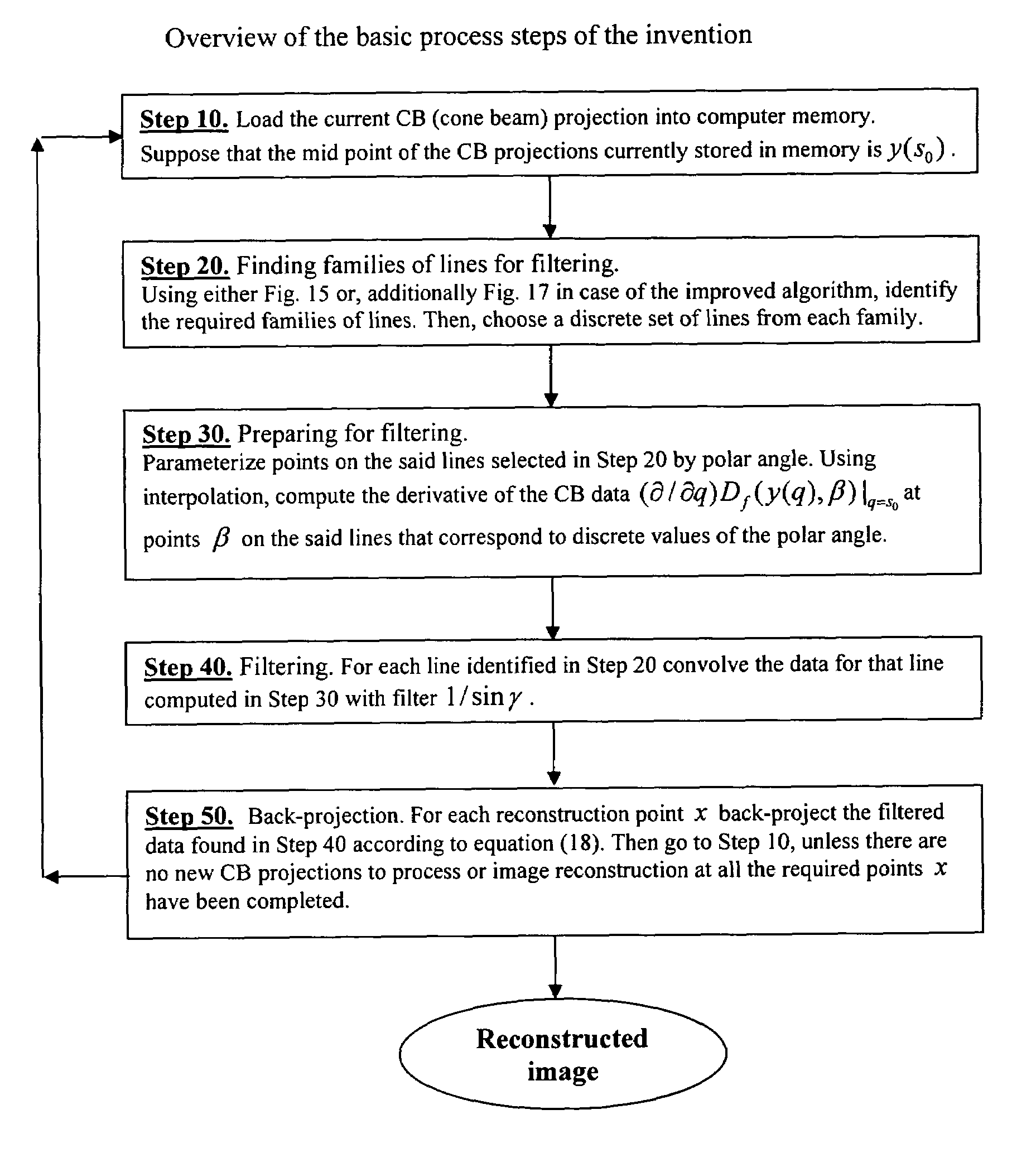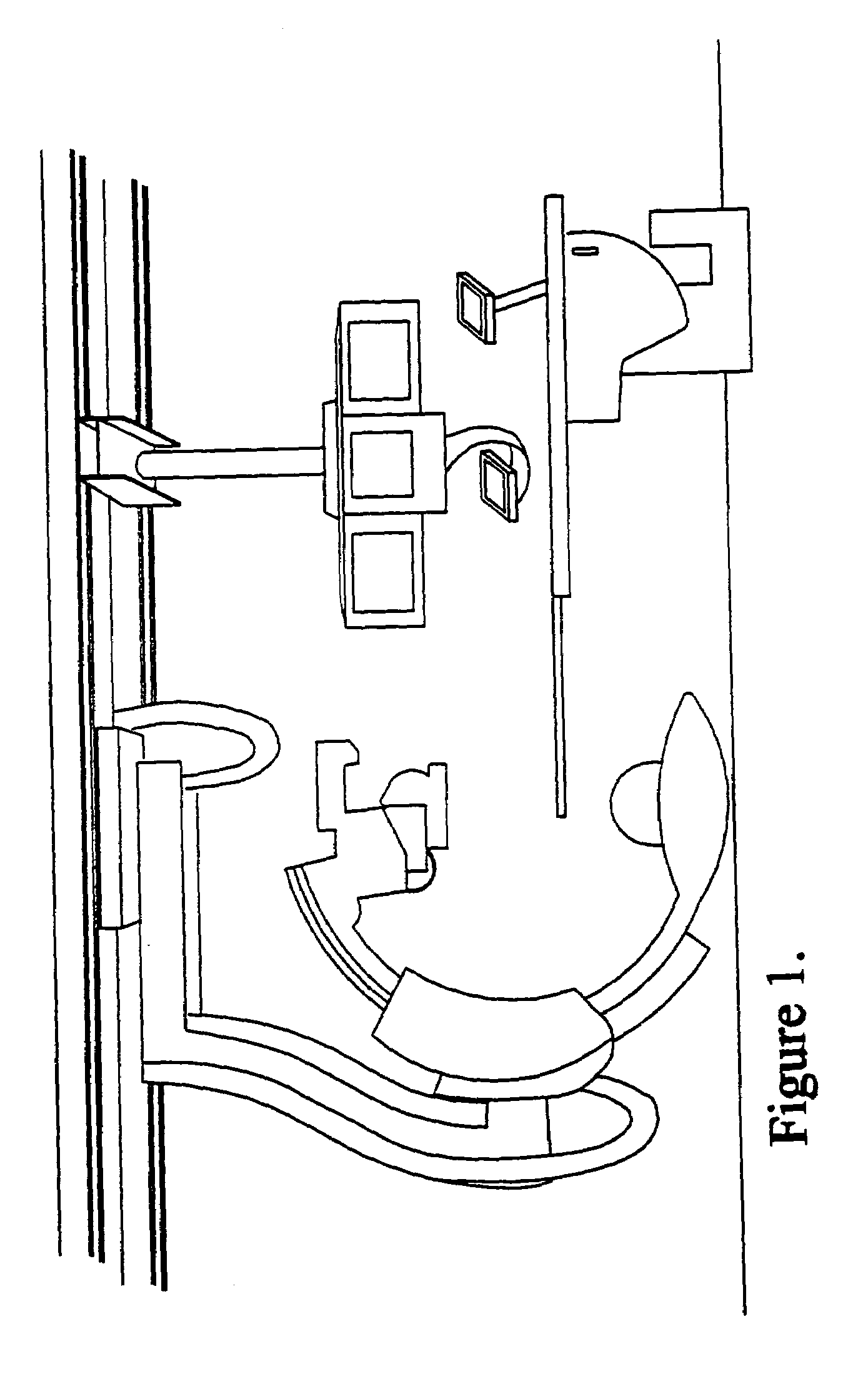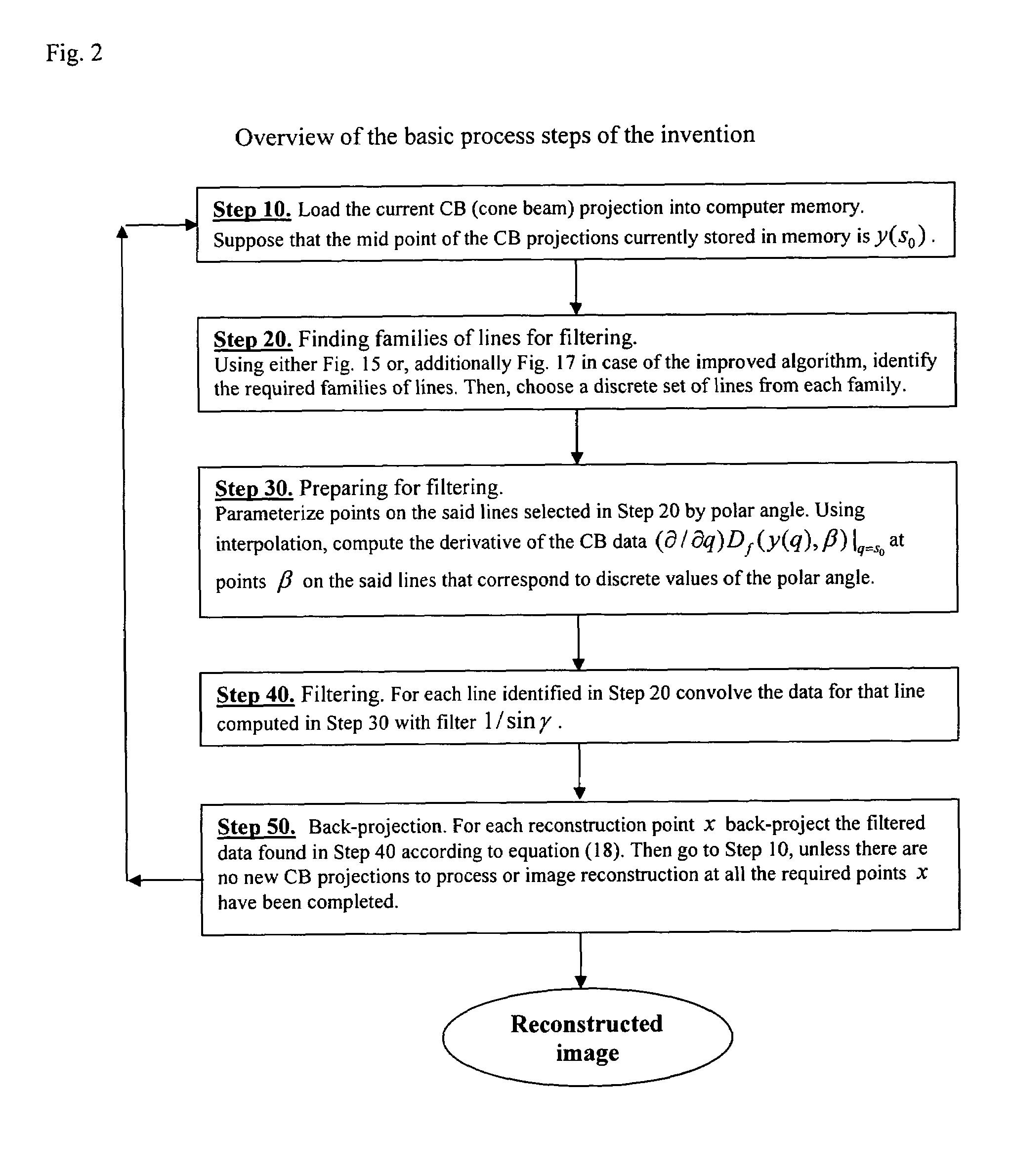3PI algorithm for spiral CT
a spiral ct and algorithm technology, applied in tomography, applications, instruments, etc., can solve the problems of consuming a lot of computer power, affecting the patient's recovery, so as to achieve the effect of slowing down the patien
- Summary
- Abstract
- Description
- Claims
- Application Information
AI Technical Summary
Benefits of technology
Problems solved by technology
Method used
Image
Examples
Embodiment Construction
[0035]Before explaining the disclosed embodiments of the present invention in detail it is to be understood that the invention is not limited in its application to the details of the particular arrangements shown since the invention is capable of other embodiments. Also, the terminology used herein is for the purpose of description and not of limitation.
[0036]This invention is a continuation-in-part of U.S. patent application Ser. No. 10 / 143,160 filed May 10, 2002, now U.S. Pat. No. 6,574,299, which is incorporated by reference, which claims the benefit of priority to U.S. Provisional Application 60 / 312,827 filed Aug. 16, 2001.
[0037]The invention will now be described in more detail.
Theoretical Background
[0038]First we introduce the necessary notations. Let
C:={y∈R3:y1=R cos(s), y2=R sin(s), y3=s(h / 2π), s∈R}, (1)
where h>0 be a spiral, and U be an open set strictly inside the spiral:
Ū⊂{x∈R3:x12+x22<r2}, 0<r<R, (2)
S2 is the unit sphere in R3, and Df(y,β):=∫0∞f(y+βt)ⅆt...
PUM
 Login to View More
Login to View More Abstract
Description
Claims
Application Information
 Login to View More
Login to View More - R&D
- Intellectual Property
- Life Sciences
- Materials
- Tech Scout
- Unparalleled Data Quality
- Higher Quality Content
- 60% Fewer Hallucinations
Browse by: Latest US Patents, China's latest patents, Technical Efficacy Thesaurus, Application Domain, Technology Topic, Popular Technical Reports.
© 2025 PatSnap. All rights reserved.Legal|Privacy policy|Modern Slavery Act Transparency Statement|Sitemap|About US| Contact US: help@patsnap.com



